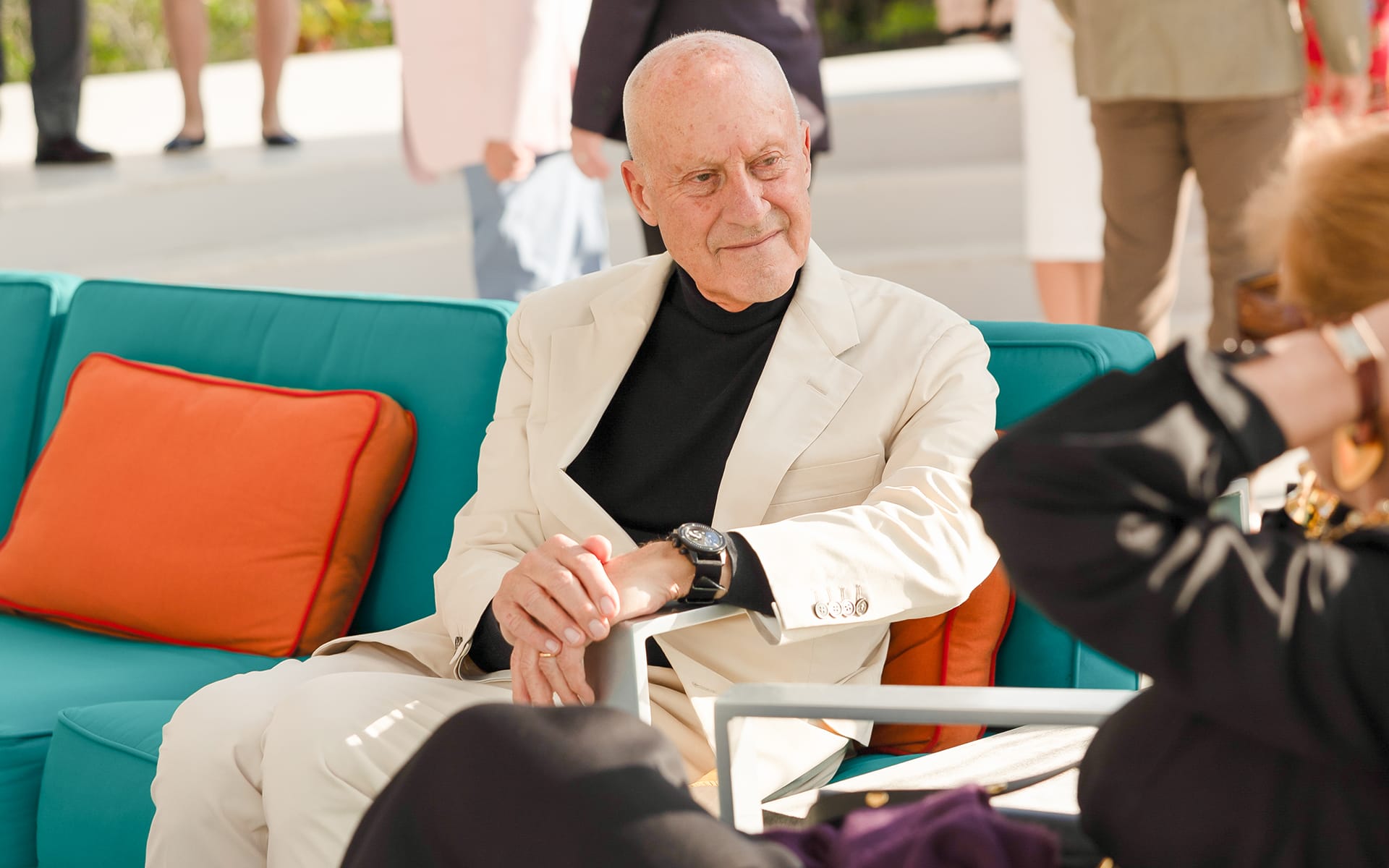Revered Architect Norman Foster Receives Philip Hanson Hiss Award in Florida
Given by Architecture Sarasota, the prize honors those doing experimental, innovative, and transformative work

A giant in the world of architecture, Norman Foster has added a new accolade to his already decorated portfolio: The Philip Hanson Hiss Award, given out by Architecture Sarasota as a way to honor local principles including innovation and environmentally-responsive design. Foster, who heads international firm Foster + Partners, is the second recipient following last year’s honoree, architect Toshiko Mori. The annual prize is named after a local civic leader who reshaped Sarasota in the mid-20th century, giving a platform to then-emerging architects such as Paul Rudolph and Tim Siebert.
Last month, Foster traveled to the coastal Florida city to receive the award in person, giving an hour-long lecture to a packed ballroom at the Art Ovation Hotel one evening and formally being given the prize the next night during a gala dinner on the grounds of the Revere Quality House, designed by Rudolph—one of his mentors—in partnership with Ralph Twitchell. “It’s nice to receive an award on behalf of the team and to raise the awareness of the importance of architecture, especially being here in Sarasota, where Paul Rudolph designed so many really incredible buildings,” Foster tells Galerie. “I went to Yale because of Rudolph and also because of the work that he’d done here. He was a rare combination of a good teacher and an outstanding architect.”


Rudolph designed an array of modernist homes in the area—among them Umbrella House and Cocoon House—and became a pioneer of what became known as the Sarasota School of Architecture. “His work was very much a response to the climate to the context of Florida,” says Foster, whose own work is celebrated for the ingenious ways it complements a variety of settings.
Foster’s Hearst Tower, for instance, completed in 2006, makes use of its urban location in the middle of Manhattan by repurposing the existing cast-limestone façade as a base for a translucent skyscraper sheathed in a unique diagrid pattern that requires 20 percent less glass overall. Meanwhile, Apple’s 64-acre corporate campus in suburban Cupertino lays so low that it’s been dubbed a “groundscraper” and features one of the world’s largest solar roofs, among a slew of other environmentally-friendly elements.


Since founding his firm in 1967, Foster has played a leading role in the rise of a cutting-edge, sustainable architecture—even if it wasn’t called “green” at the time. “All of the projects that we were doing in the beginning were hugely influenced by that new awareness of the fragility of the planet,” he reflects. “The architecture that I was promoting at that time was very much rooted as an architectural response. Not all of them were built, but the early projects were about recycling, natural ventilation, converting waste to fertilizer, and so on.”

Among Foster’s current projects under construction around the world is J.P. Morgan Chase’s headquarters at 270 Park Avenue, set to be tallest structure in New York completely powered by hydroelectric energy, at 1,388 feet. “I think that the way in which that building hits the ground, and the way in which the structure fans out, enables this building to accommodate four times the population of the original building, which was demolished,” he says. “But it creates 2.5 times the amount of public space in the ground plane.” Even in his firm’s sixth decade, Foster is still determined to make more out of less.